More online donations in 2020
The most important facts about digital donation development in Germany and Switzerland
Together with our online fundraising partners RaiseNow and Altruja, we conducted an analysis of digital donation behavior in Switzerland and Germany in 2020. Did donors tend to donate high or low amounts? Were donations more likely to go to small or large organizations? When did people primarily donate and which payment method was used most often? These questions are highlighted by the analysis and show a trend compared to the previous year.
The following in advance: The collected data of the descriptive analysis does not represent all online donations in Germany and Switzerland, but is based on processed donations from customers via the donation forms of RaiseNow (Switzerland) and Altruja (Germany) . Both are among the leading providers of online fundraising solutions in Switzerland and Germany.
The Swiss and Germans donated more online in 2020
In Switzerland, transactions and revenue increased in 2020 for both one-time and recurring donations compared to the previous year. Accordingly, one-time donation transactions increased by a full 73 percent and recurring donation transactions by 44 percent. This caused revenue from donations to increase by 66 percent and 39 percent, respectively.
Similarly, in Germany there was a rise in donation transactions and revenue in 2020 compared with the previous year. Here, donation transactions increased by 41 percent for one-time donations and by 32 percent for recurring donations. Revenues increased by around 41 percent and 43 percent respectively in relation to last year.
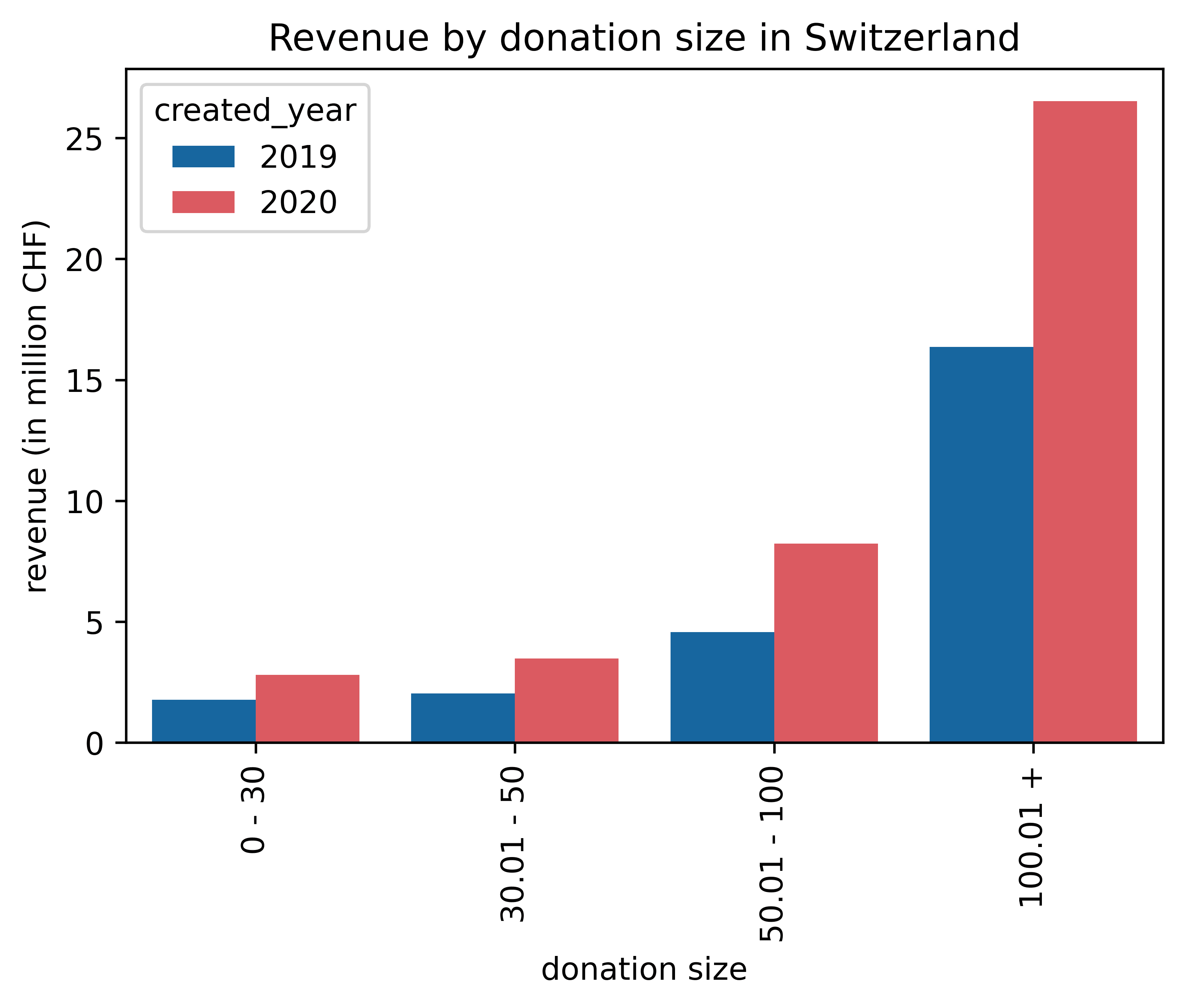
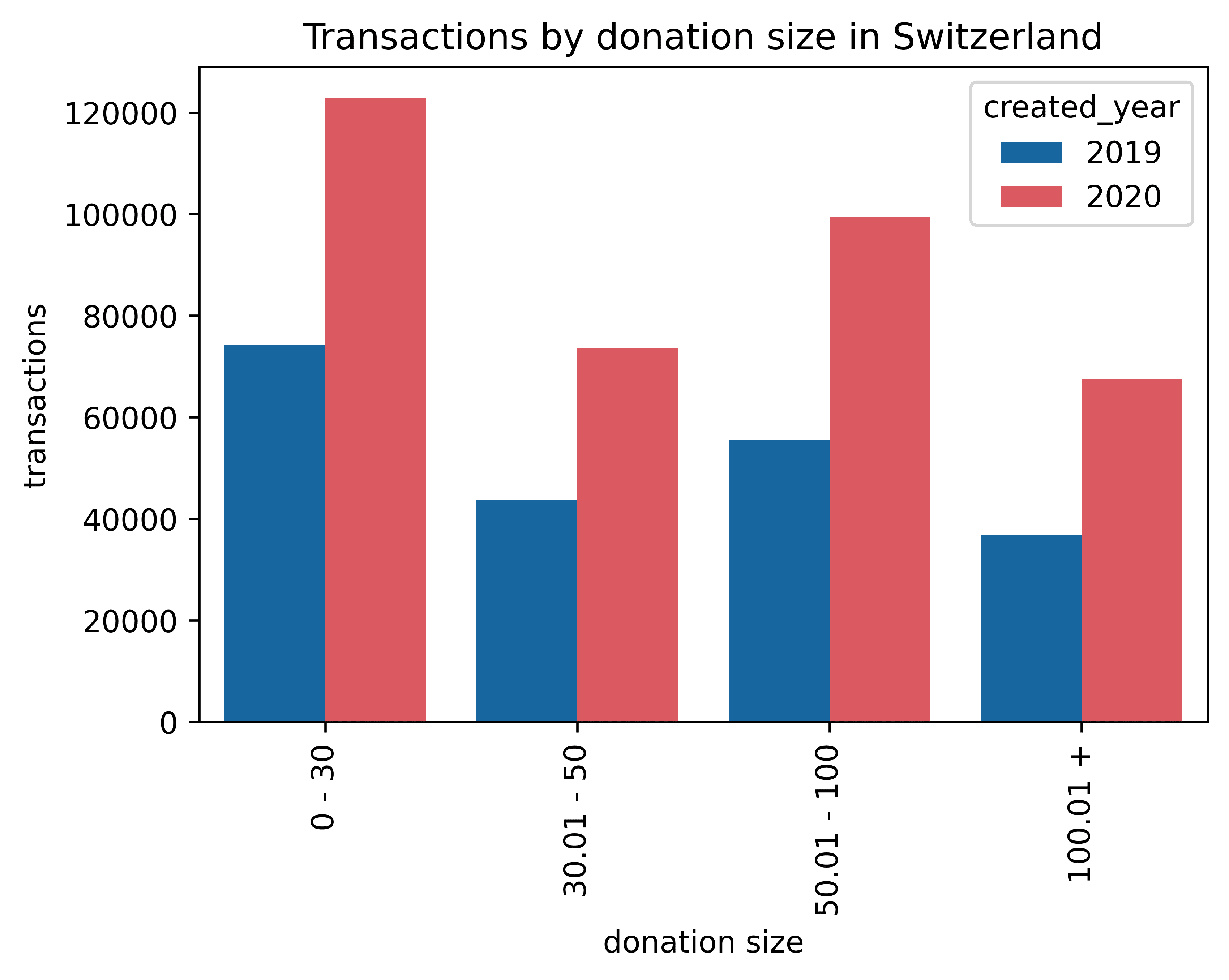
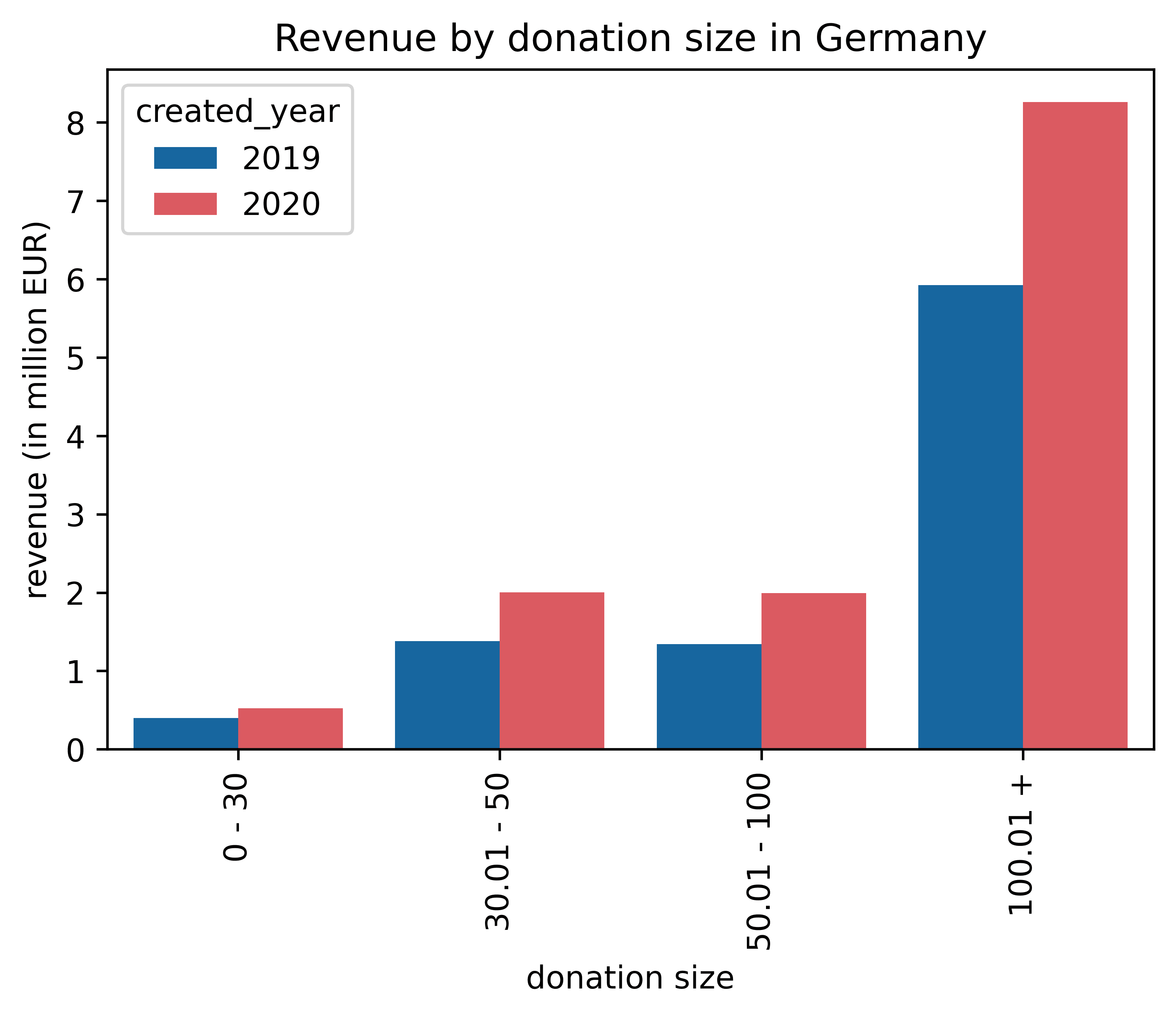
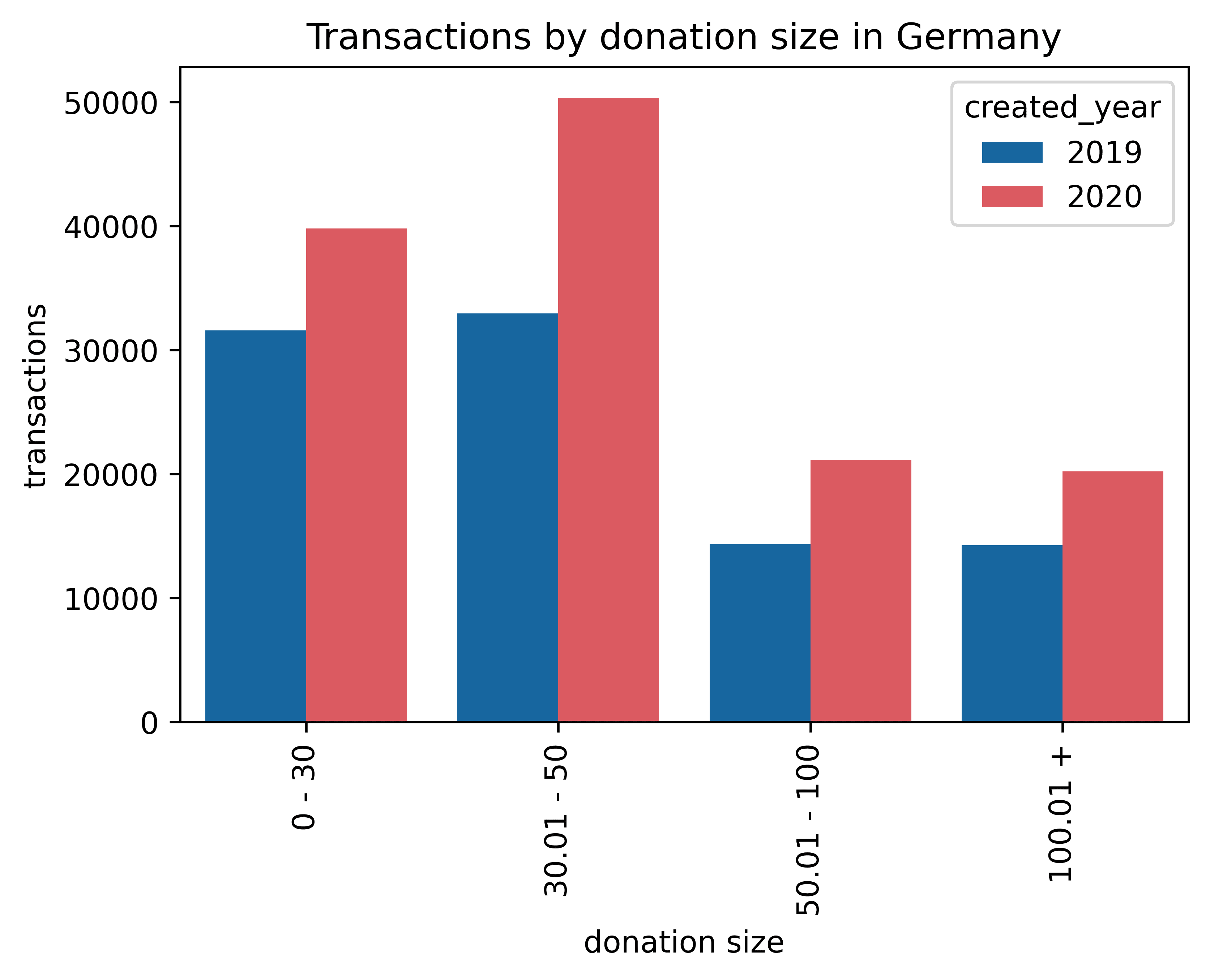
Growth across all organizational sizes
A look at both Switzerland and Germany shows that organizations of all sizes were able to record an increase in donations. A few large organizations generated the largest share of online donations. Smaller organizations, however, had the largest percentage increase, both in transactions and revenue.
In terms of donation revenue in Switzerland, the “development and disaster relief” category generated the most revenue. Overall, higher amounts were donated to organizations in this category.
In Germany, the highest increase in both donation transactions and donation revenue was recorded for non-profit organizations in the “Social aid and human rights” category. The categories “Disability, Illness and Health” and “Political Campaigns and Initiatives” – which make up a comparatively small subset – received fewer online donations compared to 2019, with both donation transactions and donation revenue falling slightly in 2020.
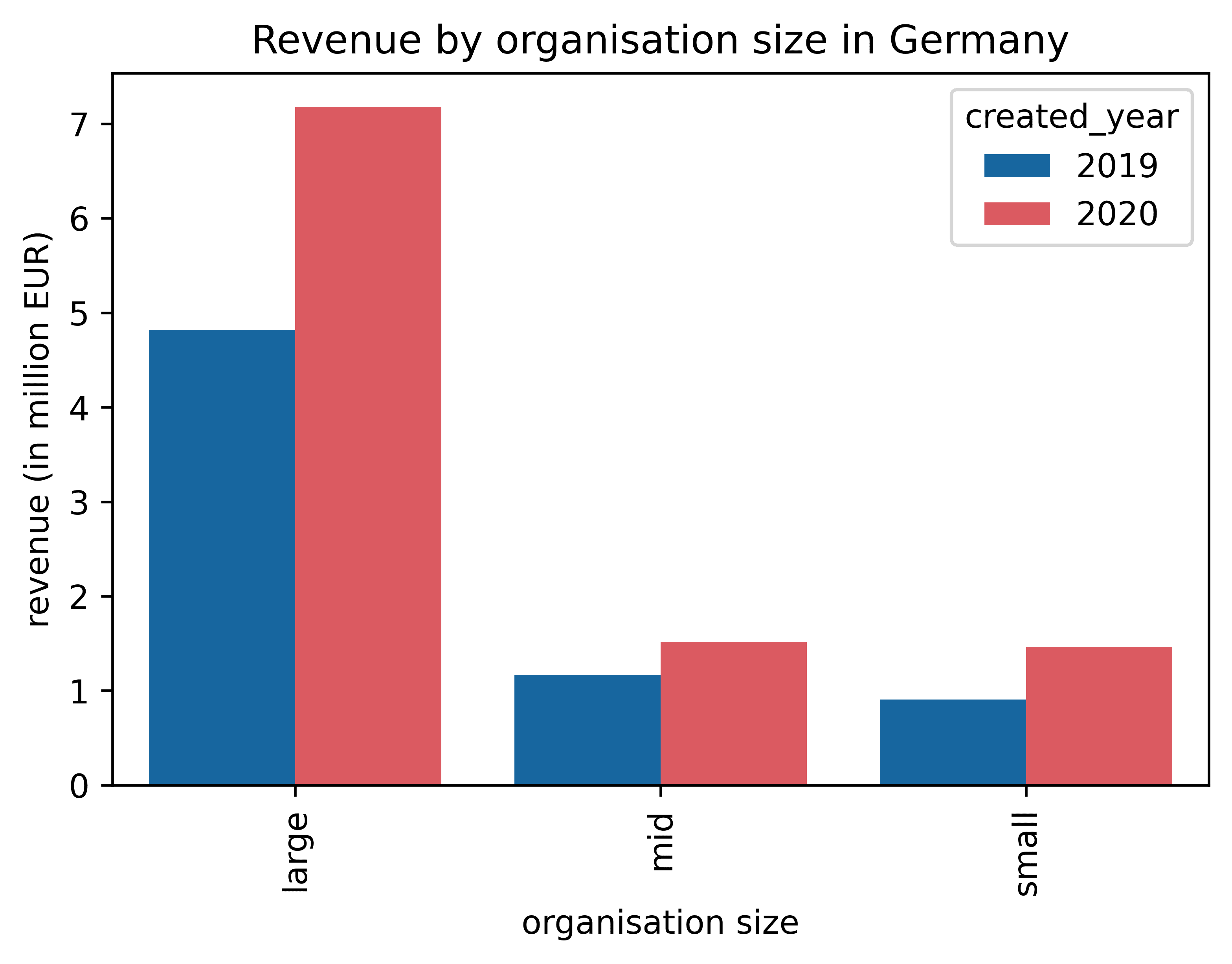
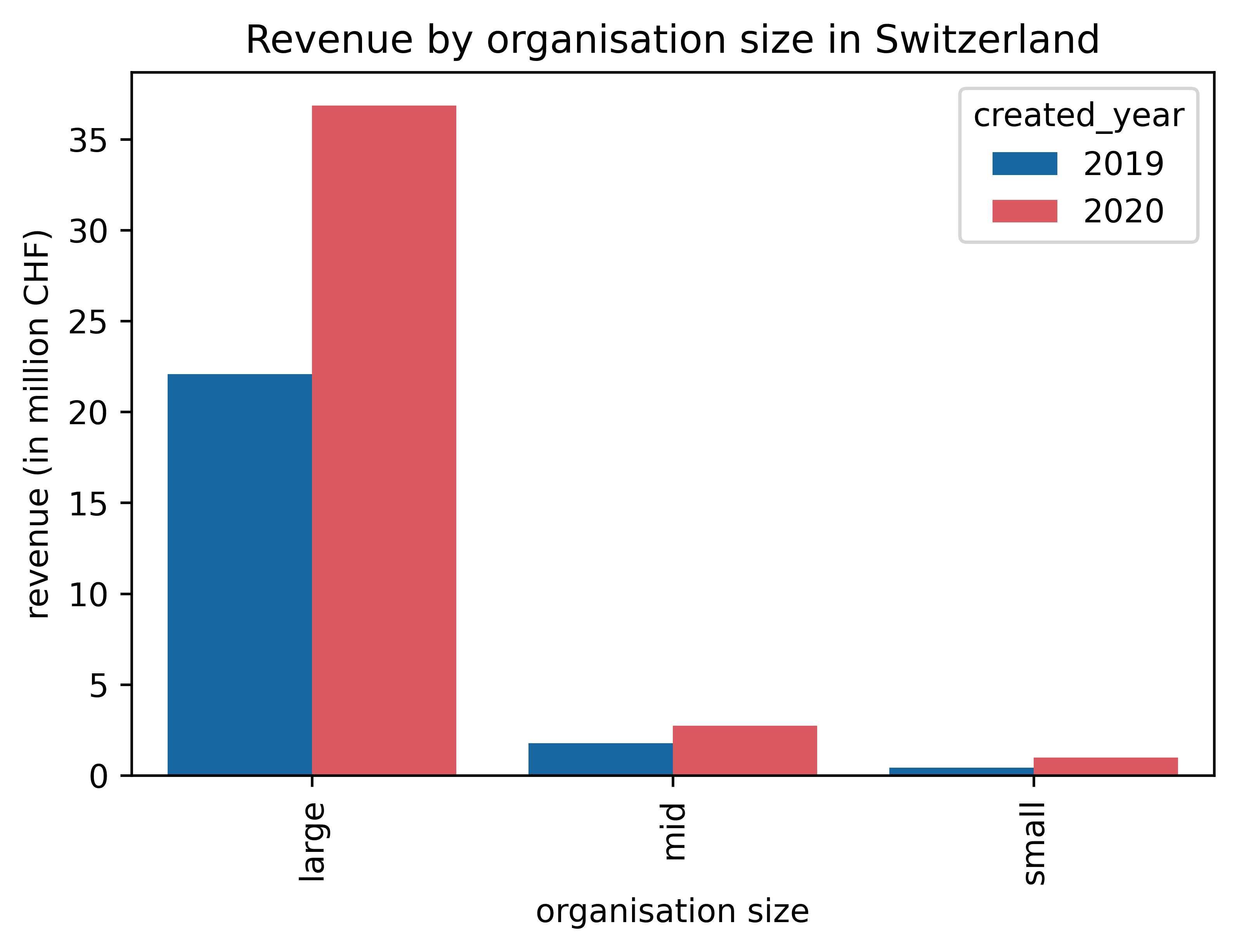
Payment methods such as Twint and small amounts attractive
In Switzerland, 81.8 percent of all transactions were 100 francs or less. However, donations of more than 100 francs generated most of the revenue (about 65.2 percent) for the organizations.
The situation was similar in Germany – where 84.6 percent of donations were 100 euros or less. Here, too, donations over 100 euros generated 65 percent of the revenue, although they accounted for only 15.4 percent of transactions.
When donors came to choosing a payment method, providers such as Twint or PayPal were increasingly used in Switzerland to make online donations. Twint saw a 257 percent increase in this area, while PayPal saw a 222 percent increase. “Twint has become the most popular method for donating in Switzerland. Especially for small donations, however, it is also catching up for large donations,” said Daniel Barco, Data Scientist at getunik and RaiseNow.
Still, for larger donations, people often resorted to credit cards. Therefore, in terms of turnover, the credit card but also the payment slip continue to be relevant.
Paypal most used in Germany for online donations
In Germany, PayPal and SOFORTÜberweisung in particular increased in popularity compared to last year. Compared to 2019, 63.6 percent more donation revenue was generated via PayPal and 61.4 percent more revenue via SOFORTÜberweisung. PayPal has also become more important in terms of revenue, but to a lesser extent. Similar to Switzerland, a large proportion of small donations in Germany were processed via providers such as PayPal. In addition, paying via SEPA is attractive among German donors. Larger donations were made with SEPA, though increasingly also with PayPal. “PayPal remains the most used method for donations and is now also the most important payment method in terms of revenue,” says Daniel Barco of getunik and RaiseNow.
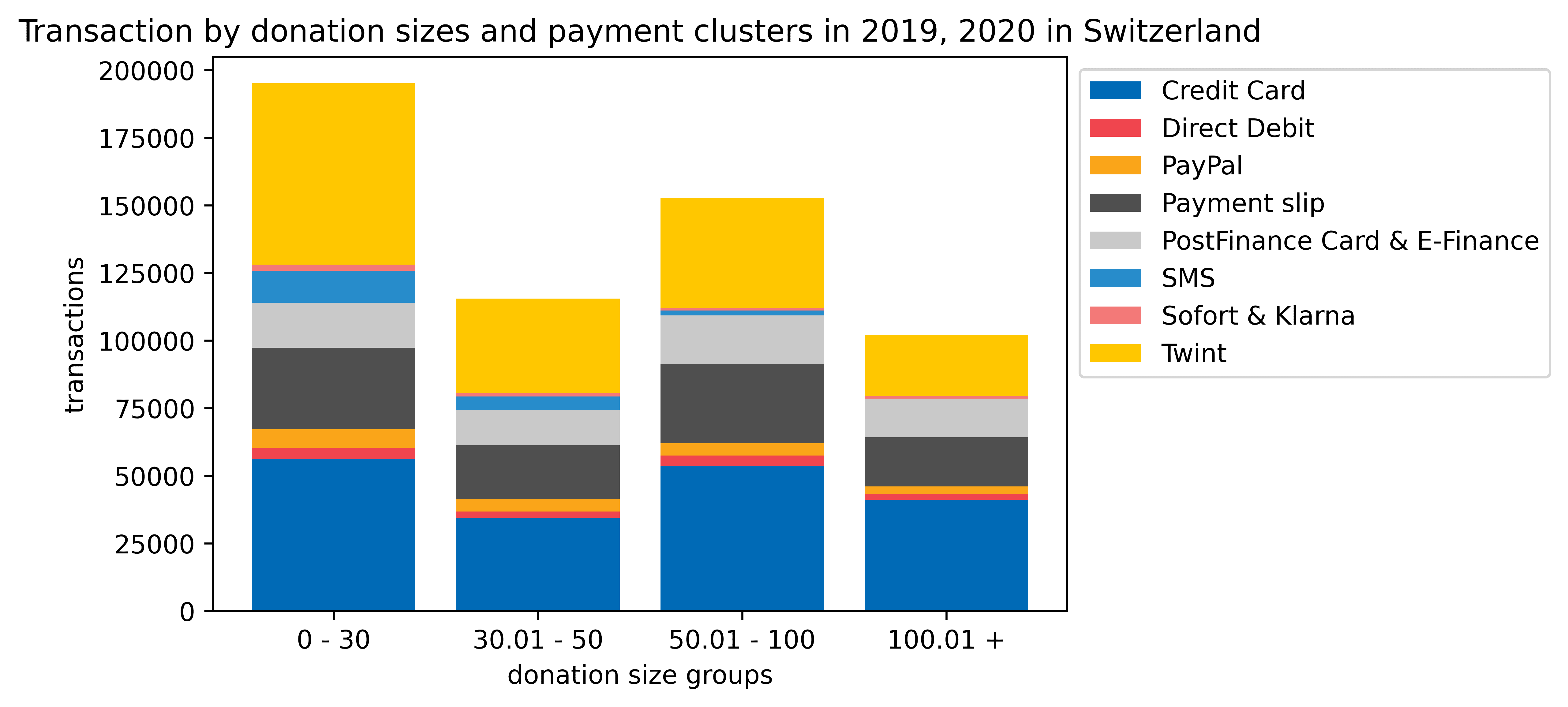
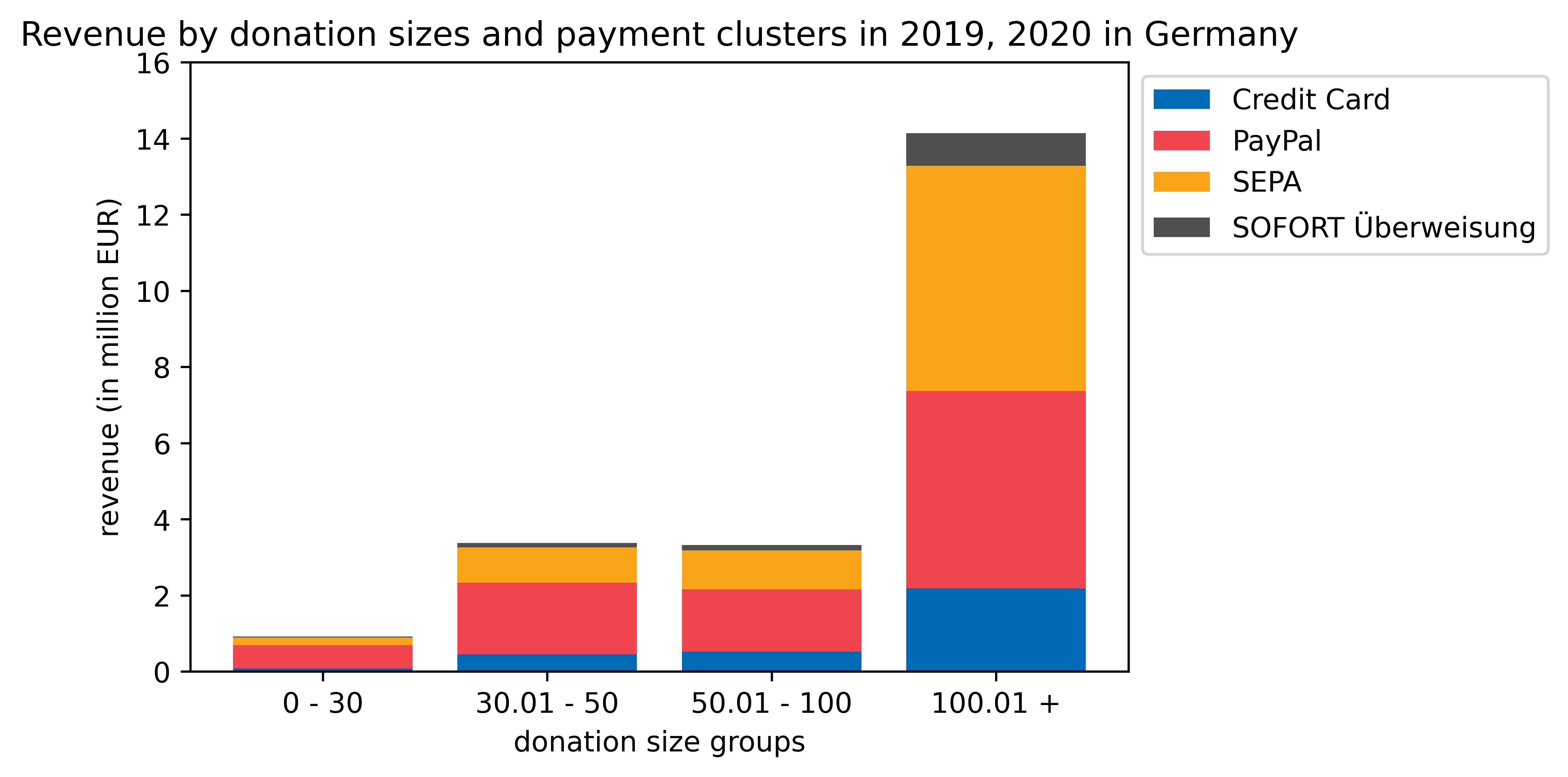
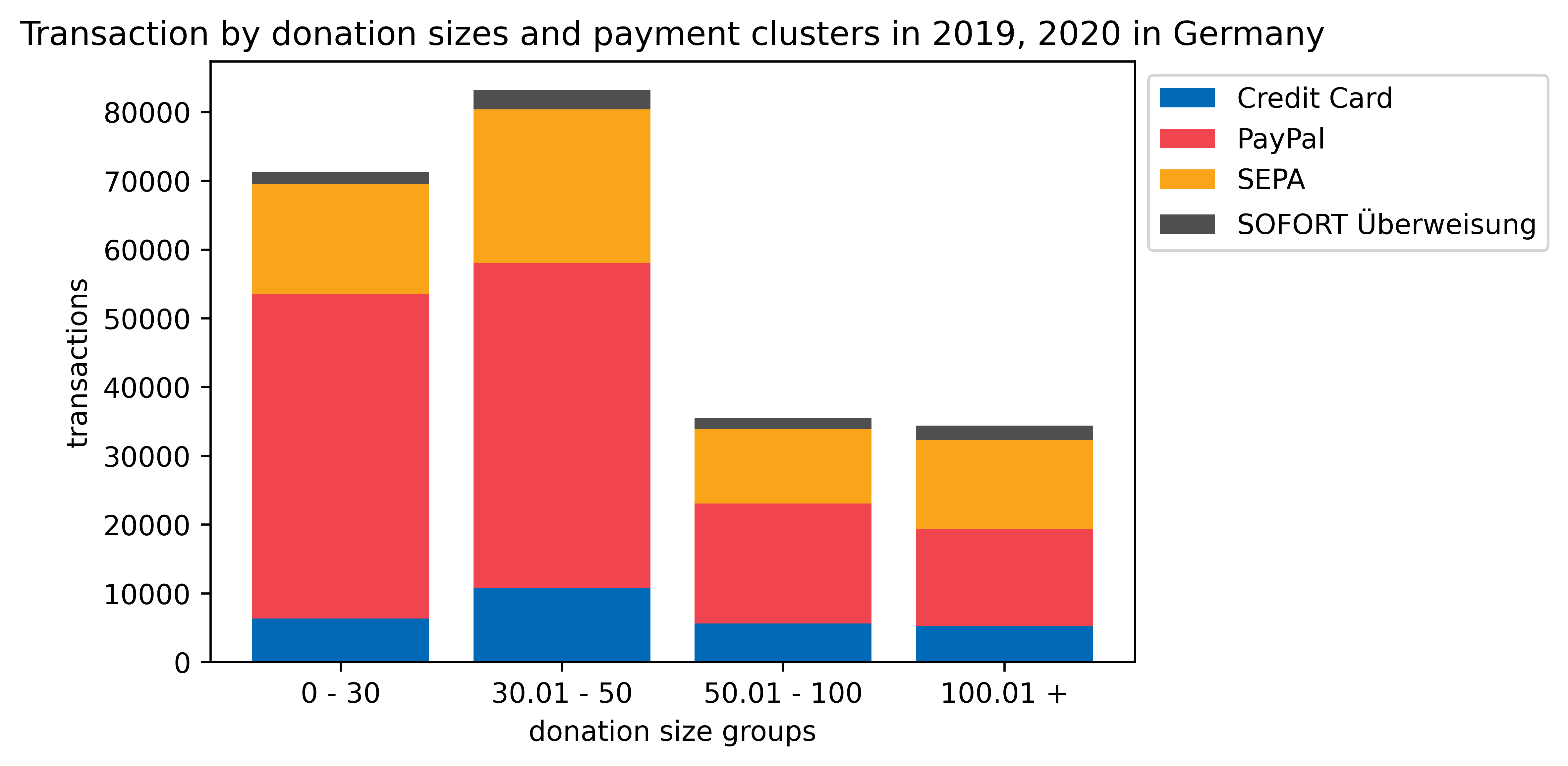
Mornings are the preferred time to donate
The time of donation is also interesting. In 2020, donors in Switzerland gave primarily on Wednesday mornings and Friday mornings. At the same time, the volume of donations increased briefly after the announcements of the various COVID 19 measures. In Switzerland, for example, higher donations than in the previous year were recorded during the first COVID lockdown starting March 16, 2020 – the period when restaurants and recreational facilities nationwide were forced to close. However, a correlation between the COVID measures and higher online donation volumes was not statistically evaluated in this study and can therefore only be suspected.
In Germany, donations were often made on Monday evenings in 2019, however Monday mornings were more popular in 2020.
More online donations during Christmas
If looking at the revenue per month with the joint COVID measures in Germany, one can see that in the period after the first major COVID measure on March 23, 2020 – in which, among other things, the number of people who were allowed to meet was limited – the donation revenue increased. Again, a causality between higher online donation revenue and the lockdown was not statistically evaluated.
Whether in Switzerland or Germany – there are generally more donations generated at the end of the year. For example, in 2019 and 2020, approximately 27 percent of online donations from Swiss organizations were generated between November 15 and December 31. For German organizations about 55 percent in the same period. The period between Christmas and New Year’s Day is also particularly important to note. This is where 5.1 percent (Switzerland) and 7.2 percent (Germany) of annual revenue was generated.
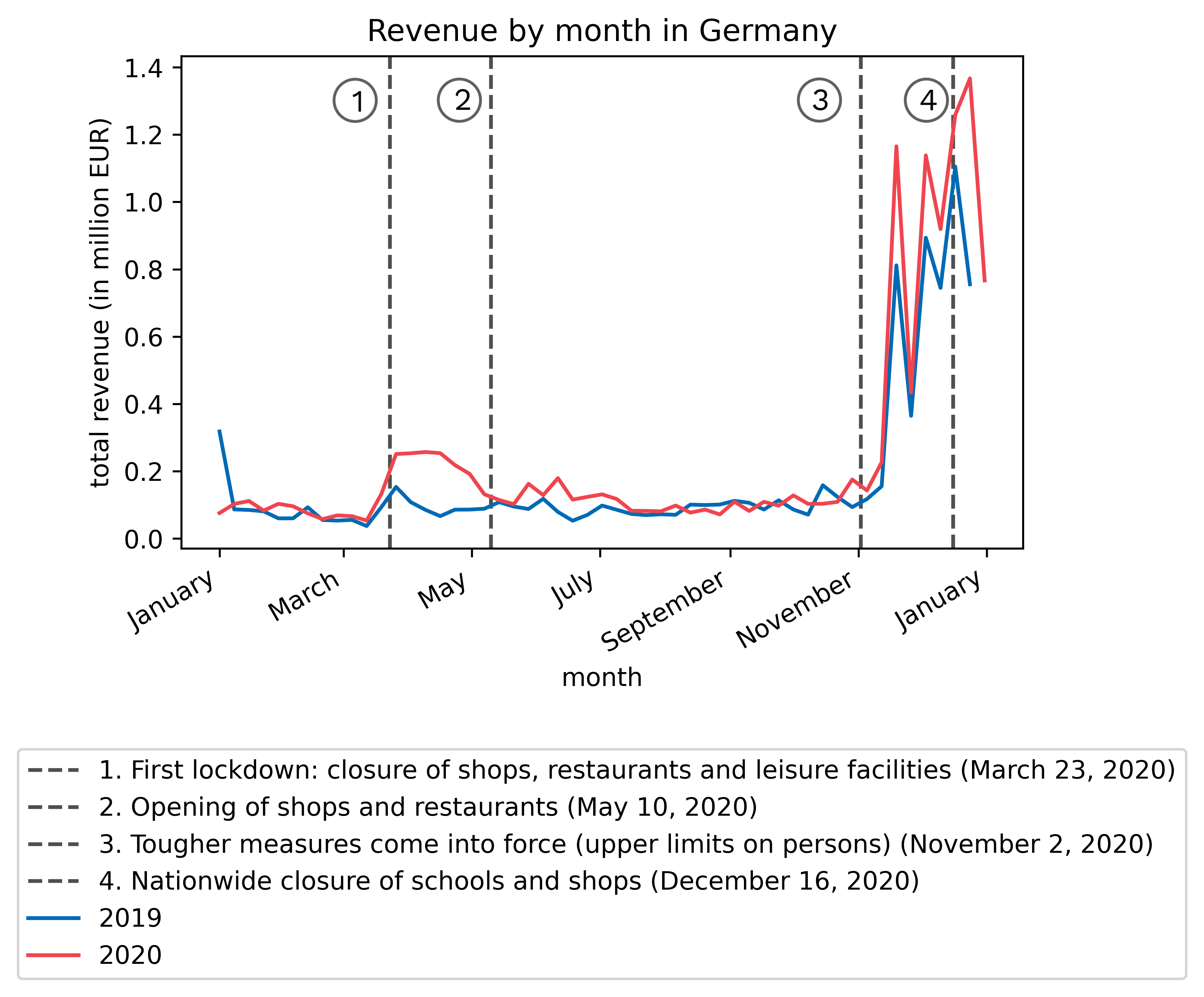
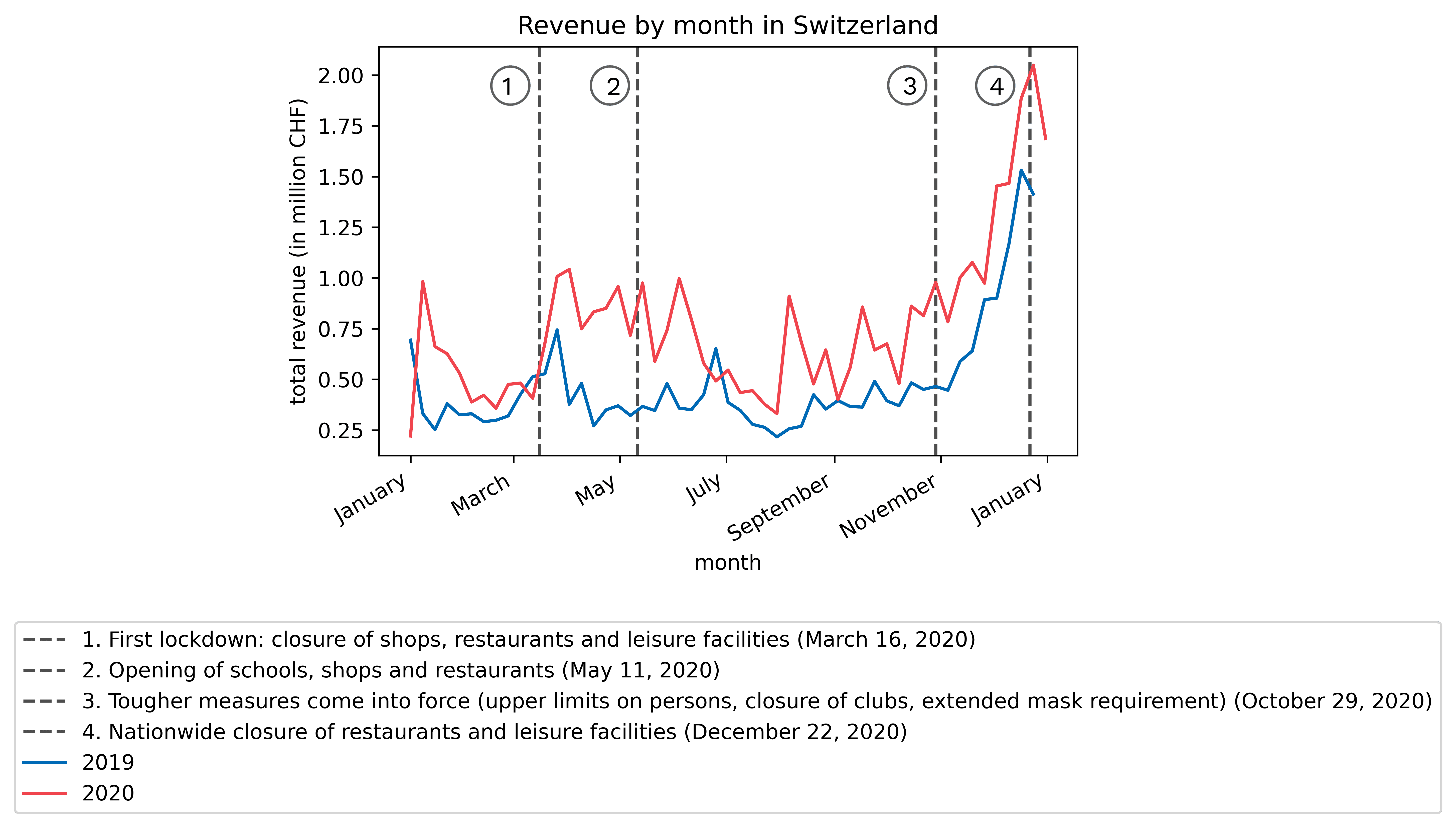
Strong online donation year 2020
Die Daten der kompletten Studie rund um das Thema „State of Digital Fundraising 2020“ stehen als Whitepaper zur Analyse zur Verfügung. Zum Download kommen Sie hier.
In general, the analysis shows that only every 5th to 7th donation exceeds 100 euros/francs. Nevertheless, these higher donations account for almost two-thirds of total revenue. The amount of the donation is thus crucial for generating revenue. Organizations should continue to focus on higher donation amounts above 100 euros/francs, as this is where the greatest revenue is generated. Conversion optimization through individualized donation amounts can be beneficial. Donors should also have the option of being able to pay with Twint and PayPal. Overall, organizations of all sizes were able to benefit from the greater willingness to donate online, both in Switzerland and in Germany. The analysis shows: The future of fundraising lies in digitization. “Cross-channel” and “donor-centric” are important buzzwords for success.
The data of the complete study around the topic “State of Digital Fundraising 2020” is available as a whitepaper. You can download it here.
